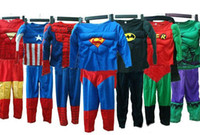Booklet: Old Glory Booklet (United States of America 2003)
Old Glory Booklet (United States of America 2003)
03 April (United States of America ) within release Old Glory goes into circulation Booklet Old Glory Booklet face value 7.40 United States dollar
| Booklet Old Glory Booklet in catalogues | |
|---|---|
| Stamp Number: | Sn: US BK294 |
Booklet is square format.
Booklet contains two booklet panes of Sn 3780b (10x 37c stamps each) on 2 different backings.Also in the issue Old Glory:
- Stamp - Uncle Sam on Bicycle with Liberty Flag face value 37;
- Stamp - 1888 Presidential Campaign Badge face value 37;
- Stamp - 1893 Silk Bookmark face value 37;
- Stamp - Modern Hand Fan face value 37;
- Stamp - Carving of Woman with Flag & Sword face value 37;
- Se-tenant - Old Glory face value 5*37;
- Booklet - Old Glory face value 10*37;
- Booklet - Old Glory Booklet face value 7.40;
Booklet Old Glory Booklet it reflects the thematic directions:
Birds of prey or predatory birds, also known as raptors, are hypercarnivorous bird species that actively hunt and feed on other vertebrates (mainly mammals, reptiles and smaller birds). In addition to speed and strength, these predators have keen eyesight for detecting prey from a distance or during flight, strong feet with sharp talons for grasping or killing prey, and powerful, curved beaks for tearing off flesh. Although predatory birds primarily hunt live prey, many species (such as fish eagles, vultures and condors) also scavenge and eat carrion
A coat of arms is an heraldic visual design on an escutcheon (i.e. shield), surcoat, or tabard. The coat of arms on an escutcheon forms the central element of the full heraldic achievement which in its whole consists of shield, supporters, crest, and motto. A coat of arms is traditionally unique to an individual person, family (except in the United Kingdom), state, organisation or corporation.
A flag is a piece of fabric (most often rectangular or quadrilateral) with a distinctive design that is used as a symbol, as a signaling device, or as decoration. The term flag is also used to refer to the graphic design employed, and flags have since evolved into a general tool for rudimentary signalling and identification, especially in environments where communication is similarly challenging (such as the maritime environment where semaphore is used). National flags are patriotic symbols with varied wide-ranging interpretations, often including strong military associations due to their original and ongoing military uses. Flags are also used in messaging, advertising, or for other decorative purposes. The study of flags is known as vexillology, from the Latin word vexillum, meaning flag or banner.
A star is a luminous spheroid of plasma held together by self-gravity. The nearest star to Earth is the Sun. Many other stars are visible to the naked eye at night; their immense distances from Earth make them appear as fixed points of light. The most prominent stars have been categorised into constellations and asterisms, and many of the brightest stars have proper names. Astronomers have assembled star catalogues that identify the known stars and provide standardized stellar designations. The observable universe contains an estimated 1022 to 1024 stars. Only about 4,000 of these stars are visible to the naked eye—all within the Milky Way galaxy.
In clothing, a suit is a set of garments made from the same cloth, usually consisting of at least a jacket and trousers. Lounge suits (also known as business suits when sober in colour and style), which originated in Britain as country wear, are the most common style of Western suit. Other types of suit still worn today are the dinner suit, part of black tie, which arose as a lounging alternative to dress coats in much the same way as the day lounge suit came to replace frock coats and morning coats; and, rarely worn today, the morning suit. This article discusses the lounge suit (including business suits), elements of informal dress code.





